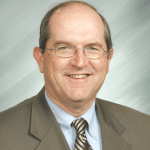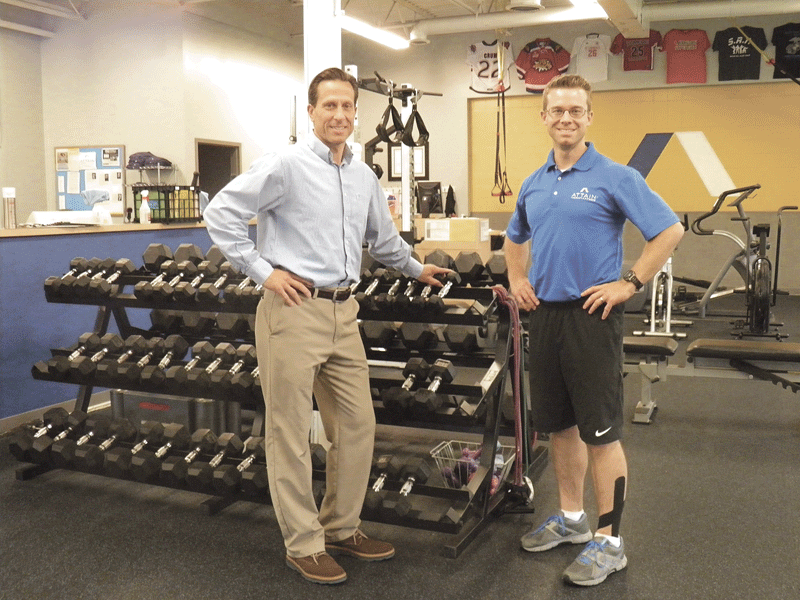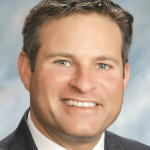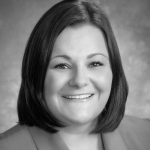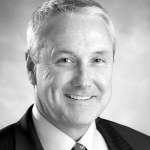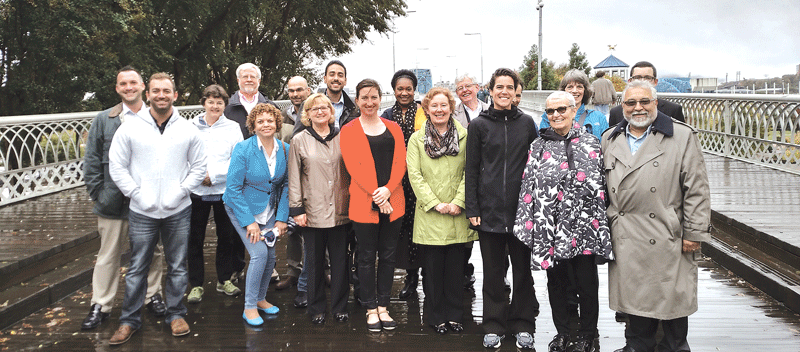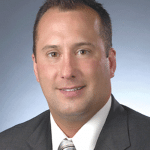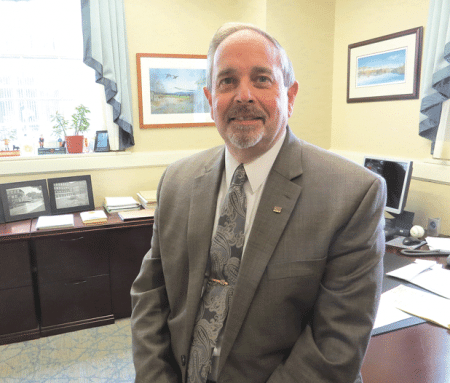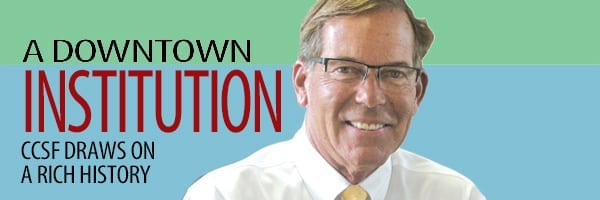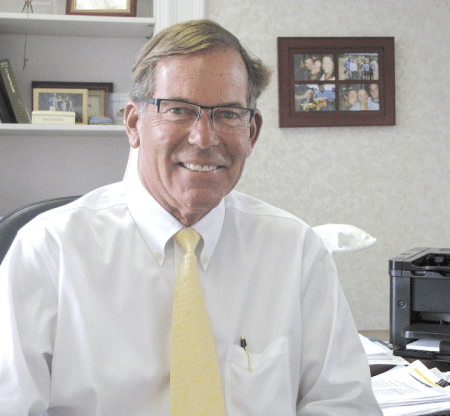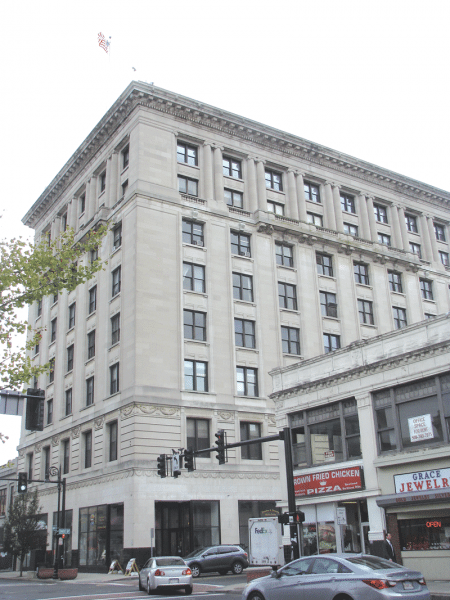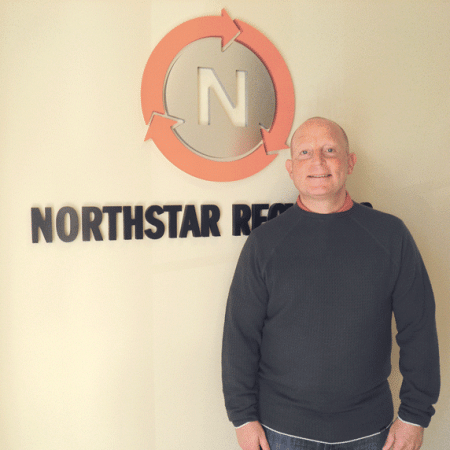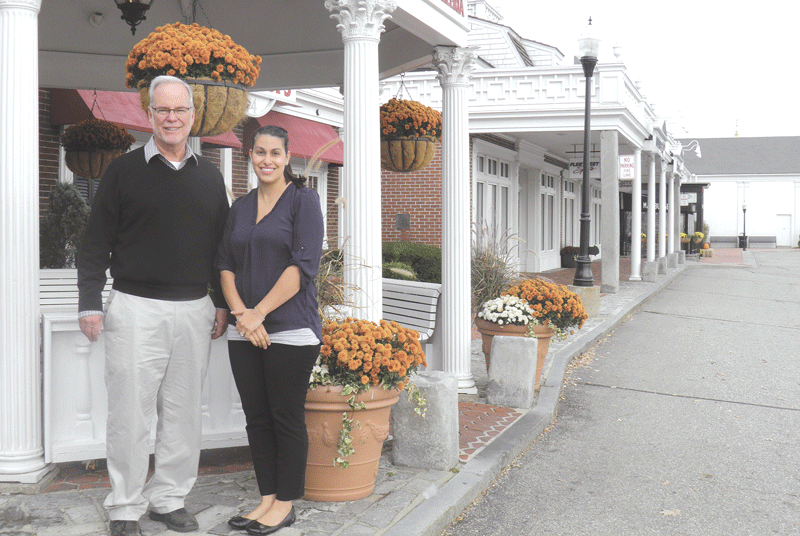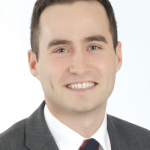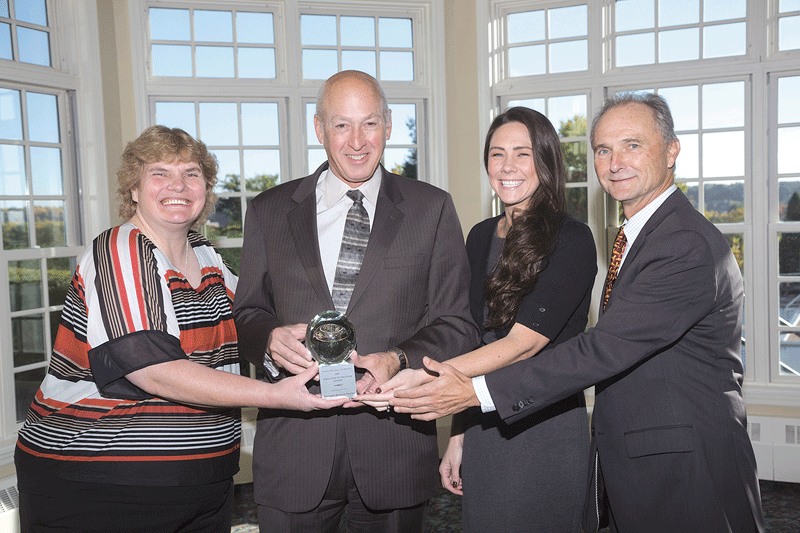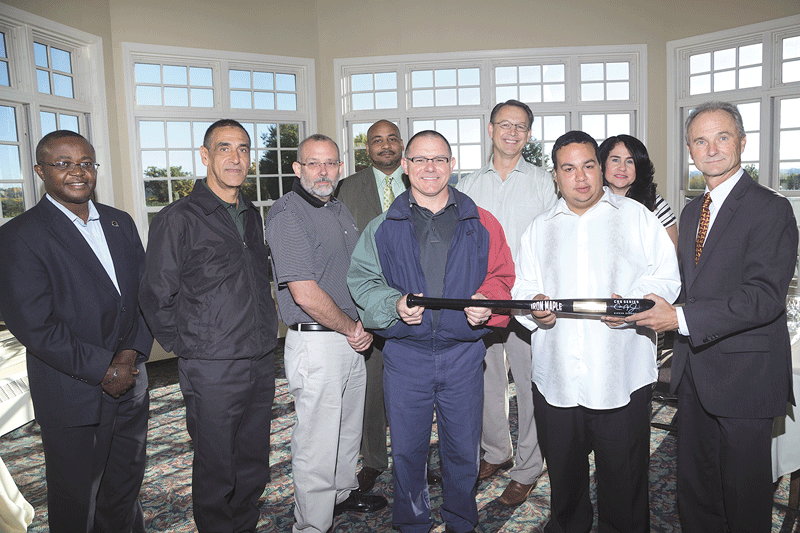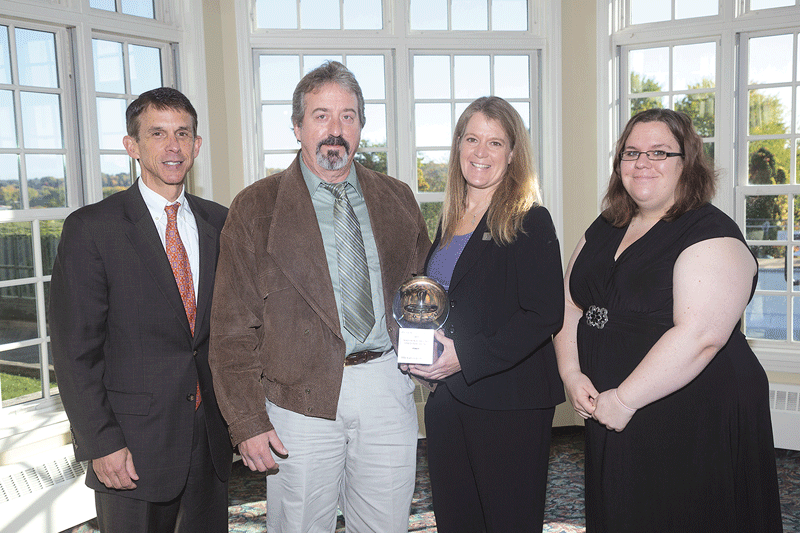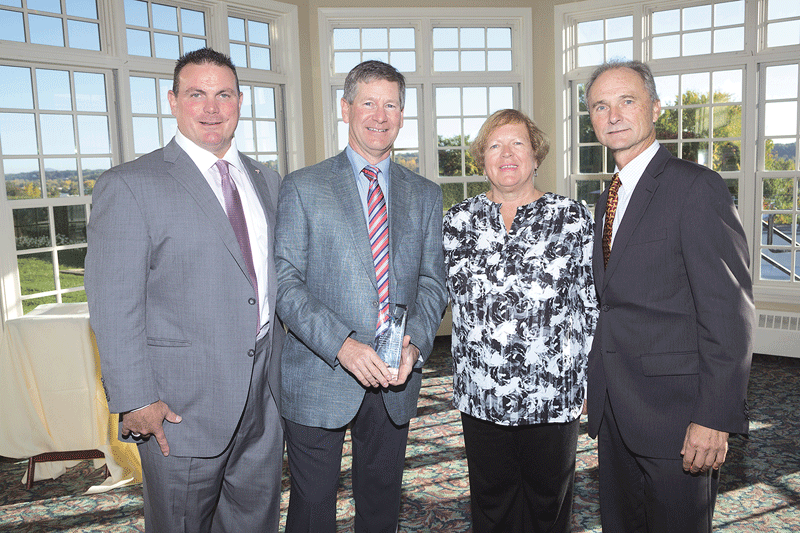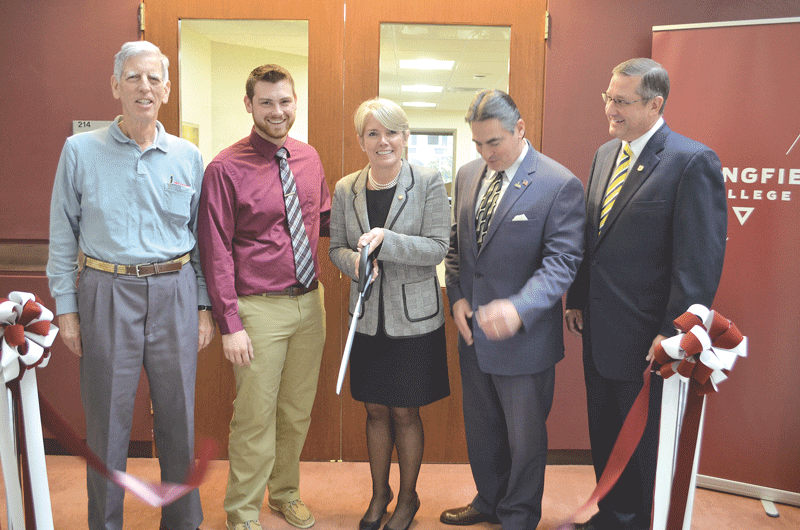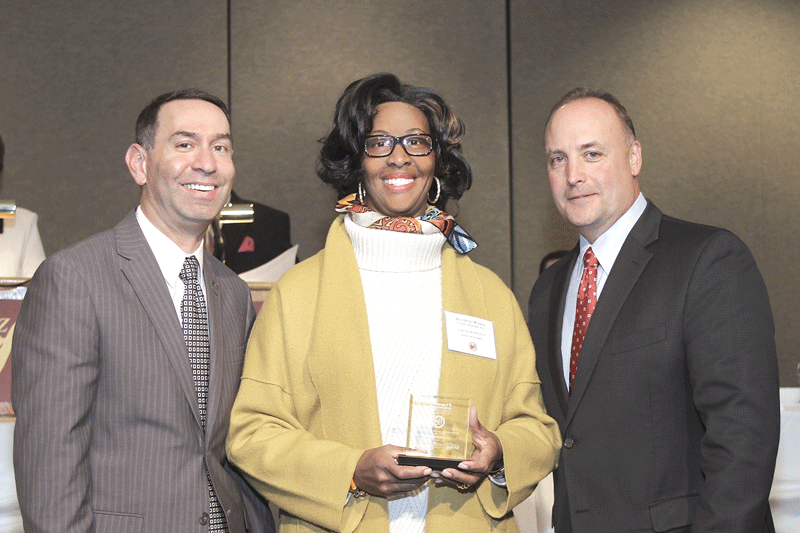HAMPDEN COUNTY
AGAWAM
135 Anvil St.
Agawam, MA 01030
Amount: $475,000
Buyer: Justin D. Matisewski
Seller: Michael D. Balise
Date: 09/30/15
78 Cooley St.
Agawam, MA 01001
Amount: $165,000
Buyer: Patricia Semanie
Seller: Sandra Dauphinais
Date: 09/25/15
95 Edward St.
Agawam, MA 01001
Amount: $275,000
Buyer: Anthony D. Saloio
Seller: Richard L. Voltz
Date: 09/29/15
123 Elm St.
Agawam, MA 01001
Amount: $163,000
Buyer: Joyce E. Siana
Seller: Patricia Misisco
Date: 09/23/15
99 Forest Hill Road
Agawam, MA 01030
Amount: $280,000
Buyer: Charles K. Frohock
Seller: David M. Healey
Date: 09/24/15
43 Fruwirth Ave.
Agawam, MA 01030
Amount: $133,000
Buyer: Angela M. Mancini
Seller: Frederick S. Fruwirth
Date: 09/30/15
Lango Lane #6
Agawam, MA 01001
Amount: $115,000
Buyer: Svetlana Strela
Seller: PBI Inc.
Date: 09/28/15
1410 Main St.
Agawam, MA 01001
Amount: $240,000
Buyer: Shellie M. Donner
Seller: William A. Saltman
Date: 09/30/15
180 Mallard Circle
Agawam, MA 01001
Amount: $262,900
Buyer: Carrie L. Smith
Seller: Bruce R. Hebert
Date: 09/25/15
497 North St.
Agawam, MA 01030
Amount: $214,000
Buyer: Sherika T. Allen
Seller: Joshua X. Tower
Date: 09/28/15
536 North St.
Agawam, MA 01030
Amount: $310,000
Buyer: Sarah C. Hoisington
Seller: Frank M. Lalli
Date: 09/21/15
1068 North St. Ext.
Agawam, MA 01001
Amount: $160,000
Buyer: Kostiantyn Kuterhin
Seller: Rose M. Alessandri
Date: 09/22/15
189 North West St.
Agawam, MA 01030
Amount: $199,900
Buyer: Michael C. Lagacy
Seller: Jacob Dushane
Date: 09/30/15
337 North West St.
Agawam, MA 01030
Amount: $115,000
Buyer: Robert J. Consedine
Seller: Town Of Agawam
Date: 09/29/15
30-32 Ottawa St.
Agawam, MA 01001
Amount: $177,000
Buyer: Stephen M. Buynicki
Seller: Evans, Ernest D., (Estate)
Date: 09/30/15
139 Parkedge Dr.
Agawam, MA 01030
Amount: $165,000
Buyer: Robert J. Carey
Seller: Lynne Kerber
Date: 09/30/15
266 Poplar St.
Agawam, MA 01030
Amount: $219,000
Buyer: William J. Sperry
Seller: Francis C. Lewis
Date: 09/30/15
74 Silver St.
Agawam, MA 01001
Amount: $206,000
Buyer: Juanita D. Estrada
Seller: Walter Hollinger
Date: 09/30/15
570 Springfield St.
Agawam, MA 01030
Amount: $145,000
Buyer: George Deveno
Seller: KMCG Realty LLC
Date: 09/30/15
1275 Suffield St.
Agawam, MA 01001
Amount: $164,900
Buyer: Carmen C. Marin
Seller: James D. Dow
Date: 09/28/15
105 Witheridge St.
Agawam, MA 01030
Amount: $176,000
Buyer: Sarah R. Lempke
Seller: Robert J. Carey
Date: 09/23/15
BLANDFORD
66 1st St.
Brimfield, MA 01010
Amount: $225,000
Buyer: Lori J. Hitchcock-Mietka
Seller: Michael A. Mike
Date: 09/30/15
14 Island Acres Road
Blandford, MA 01008
Amount: $233,000
Buyer: Timothy J. Willmott
Seller: Joshua A. Weinstein
30 Mill Lane
Brimfield, MA 01010
Amount: $689,900
Buyer: Hilltop Northeast Enterprises LLC
Seller: Donald G. Moriarty
Date: 09/29/15
BRIMFIELD
Route 20
Brimfield, MA 01010
Amount: $170,000
Buyer: RCFAM LLC
Seller: Robert H. Clark
Date: 09/25/15
160 Warren Road
Brimfield, MA 01010
Amount: $227,000
Buyer: Jerrold Bennett
Seller: Jeremy P. Hart
Date: 09/22/15
CHICOPEE
157 Amherst St.
Chicopee, MA 01013
Amount: $150,000
Buyer: Rafael Cornier
Seller: Melro Associates Inc.
Date: 09/24/15
145 Beauregard Terrace
Chicopee, MA 01020
Amount: $160,000
Buyer: Raymond D. Potvin
Seller: Jeanne M. Lafleur
Date: 09/30/15
54 Berger St.
Chicopee, MA 01020
Amount: $159,900
Buyer: Tatyana Onufriychuk
Seller: MNH Sub 1 LLC
Date: 09/25/15
47 Blanchwood Ave.
Chicopee, MA 01013
Amount: $205,000
Buyer: David Sullivan
Seller: Myles J. Mueller
Date: 09/25/15
53 Bonneville Ave.
Chicopee, MA 01013
Amount: $178,000
Buyer: Cristina Polanco
Seller: Angela Coulopoulos
Date: 09/25/15
50 Calvin St.
Chicopee, MA 01013
Amount: $190,000
Buyer: Miroslawa Mazgula
Seller: Mark J. Dion
Date: 09/30/15
10 David St.
Chicopee, MA 01020
Amount: $215,000
Buyer: Caleb Z. Provost
Seller: Heather K. Wrisley
Date: 09/29/15
162 Empire St.
Chicopee, MA 01013
Amount: $130,000
Buyer: Nathan P. Mahoney
Seller: Patricia A. Fredette
Date: 09/28/15
82 Fairview Ave.
Chicopee, MA 01013
Amount: $195,000
Buyer: Aleksey Stebenkov
Seller: Vyacheslav Kuzmenko
Date: 09/29/15
36 Harrington Road
Chicopee, MA 01020
Amount: $129,900
Buyer: Kimberly Dout
Seller: Bruce Flynn
Date: 09/30/15
20 Harwich St.
Chicopee, MA 01013
Amount: $160,000
Buyer: Kenneth P. Andrulot
Seller: Kenneth C. Burkamp
Date: 09/22/15
115 Haven Ave.
Chicopee, MA 01013
Amount: $120,000
Buyer: Michael W. Guiel
Seller: William V. Guiel
Date: 09/21/15
47 Lester St.
Chicopee, MA 01020
Amount: $232,500
Buyer: Craig Cwalina
Seller: Kenneth R. Hebert
Date: 09/28/15
63 Ludger Ave.
Chicopee, MA 01020
Buyer: Andrew R. Beaudry
Seller: Jeremiah Beaudry
Date: 09/25/15
6 Macek Dr.
Chicopee, MA 01013
Amount: $175,000
Buyer: Arminda P. Hanifin
Seller: Lynn Dehneh
Date: 09/24/15
55 Mary St.
Chicopee, MA 01020
Amount: $165,000
Buyer: Linda Furgal
Seller: Christopher P. Renaud
Date: 09/29/15
165 McCarthy Ave.
Chicopee, MA 01020
Amount: $187,000
Buyer: Jean P. Desjardins
Seller: Shirley R. Chretien
Date: 09/21/15
75 Murphy Lane
Chicopee, MA 01020
Amount: $115,000
Buyer: Riverbend 2 Properties
Seller: Charles M. Johnson
Date: 09/24/15
N/A
Chicopee, MA 01013
Amount: $232,000
Buyer: Nathan F. Labak
Seller: Weaver, Kimberly K., (Estate)
Date: 09/30/15
18 Ogden St.
Chicopee, MA 01013
Amount: $235,000
Buyer: Alexis Rodriguez
Seller: Thanh Monat
Date: 09/30/15
148 Telegraph Ave.
Chicopee, MA 01020
Amount: $152,000
Buyer: Tammy Szukala
Seller: Yelena S. Pavlenko
Date: 09/29/15
153 Tolpa Circle
Chicopee, MA 01020
Amount: $210,000
Buyer: Angela Rodriguez
Seller: Bank Of America
Date: 09/23/15
EAST LONGMEADOW
22 Bettswood Road
East Longmeadow, MA 01028
Amount: $120,000
Buyer: Thomas Anthony
Seller: Donna W. Gore
Date: 09/22/15
28 Crescent Hill
East Longmeadow, MA 01028
Amount: $200,000
Buyer: Michael M. Brock
Seller: Norman R. Vigneault
Date: 09/30/15
98 Evergreen Dr.
East Longmeadow, MA 01028
Amount: $400,000
Buyer: David E. Labrie
Seller: Jason M. Newmark
Date: 09/25/15
53 Melrose Ave.
East Longmeadow, MA 01028
Amount: $302,000
Buyer: Dung V. Pham
Seller: Michael Carabetta
Date: 09/22/15
17 Peachtree Road
East Longmeadow, MA 01028
Amount: $475,000
Buyer: Seved P. Gheblealivand
Seller: Micheal A. Sorokin
Date: 09/24/15
HAMPDEN
198 Ames Road
Hampden, MA 01036
Amount: $240,000
Buyer: Thomas Petzold
Date: 09/30/15
61 Stafford Road
Hampden, MA 01036
Amount: $665,000
Buyer: James R. Damour
Seller: Kevin J. Caputo
Date: 09/25/15
53 Steepleview Dr.
Hampden, MA 01036
Amount: $747,682
Buyer: Robert J. Villeneuve
Seller: Michael J. Kane
Date: 09/25/15
HOLLAND
10 Forest Court
Holland, MA 01521
Amount: $270,000
Buyer: Gerald Baseel
Seller: Jon R. Macneal
Date: 09/22/15
HOLYOKE
43 Amherst St.
Holyoke, MA 01040
Amount: $267,500
Buyer: James E. Durfee
Seller: Maureen M. Grenier
Date: 09/30/15
61 Bemis Road
Holyoke, MA 01040
Amount: $250,000
Buyer: Mark Peltier
Seller: Philip B. Kraus
Date: 09/24/15
57 Calumet Road
Holyoke, MA 01040
Amount: $156,200
Buyer: Samuel J. Verla
Seller: Michael J. Sullivan
Date: 09/30/15
108 Chapin St.
Holyoke, MA 01040
Amount: $164,408
Buyer: FNMA
Seller: Gilberto J. Sotolongo
Date: 09/28/15
121 Elm St.
Holyoke, MA 01040
Amount: $200,000
Buyer: Hugenpoet LLC
Seller: Gretna Green Development
Date: 09/30/15
19-27 Hadley Mill Road
Holyoke, MA 01040
Amount: $130,000
Buyer: Reynardo Nazario
Seller: Patricia Gosselin-Gorman
Date: 09/30/15
1155 Hampden St.
Holyoke, MA 01040
Amount: $210,000
Buyer: Amer F. Ahmed
Seller: Conrad Duquette
Date: 09/29/15
19 Joanne Dr.
Holyoke, MA 01040
Amount: $190,000
Buyer: Stephen M. Swindell
Seller: Lorraine M. Gorham
Date: 09/24/15
4-6 Orchard St.
Holyoke, MA 01040
Amount: $206,000
Buyer: Karl H. Hastings
Seller: Ana E. West
Date: 09/30/15
358 Pleasant St.
Holyoke, MA 01040
Amount: $168,000
Buyer: Jose L. Colon
Seller: Everett J. Sexton
Date: 09/30/15
206 South St.
Holyoke, MA 01040
Amount: $122,333
Buyer: Ventures TR
Seller: Edwin R. Rivera
Date: 09/23/15
417 Southampton Road
Holyoke, MA 01040
Amount: $180,500
Buyer: FNMA
Seller: Kathleen Welch
Date: 09/25/15
54 Sterling Road
Holyoke, MA 01040
Amount: $224,500
Buyer: Kathleen M. Marcinek
Seller: Deanna M. Dunn
Date: 09/25/15
LONGMEADOW
67 Allen Road
Amount: $340,000
Buyer: Eileen S. Savoy
Seller: Scott M. Gousse
Date: 09/28/15
18 Blokland Dr.
Longmeadow, MA 01106
Amount: $250,000
Buyer: Kenneth R. Holt
Seller: Sun T. Lin
Date: 09/30/15
25 Dover Road
Longmeadow, MA 01106
Amount: $327,000
Buyer: Robert Heap
Seller: Barbara K. Seabury
Date: 09/30/15
40 Edgemont St.
Longmeadow, MA 01106
Amount: $287,000
Buyer: Kimberly M. Maynard
Seller: Henry Dutcher
Date: 09/25/15
70 Emerson Road
Longmeadow, MA 01106
Amount: $330,000
Buyer: Donna Flores
Seller: Warren S. Sumner
Date: 09/25/15
43 Fernleaf Ave.
Longmeadow, MA 01106
Amount: $200,000
Buyer: PLS Realty Inc.
Seller: Regan, Jeanette T., (Estate)
Date: 09/30/15
81 Glenbrook Lane
Longmeadow, MA 01106
Amount: $500,000
Buyer: Sean Daoust
Seller: James F. Foard
Date: 09/29/15
68 Northfield Road
Longmeadow, MA 01106
Amount: $480,000
Buyer: Douglas W. Taylor
Seller: Jay B. Appleman
Date: 09/30/15
170 Overbrook Road
Longmeadow, MA 01106
Amount: $870,000
Buyer: James M. Fitzpatrick
Seller: James F. Zick
Date: 09/30/15
101 Tanglewood Dr.
Longmeadow, MA 01106
Amount: $490,000
Buyer: Kalyan K. Pundla
Seller: Gloria J. Wilson
Date: 09/23/15
26 Whitmun Road
Longmeadow, MA 01106
Amount: $232,500
Buyer: Richard Butera
Seller: Gary M. Hebert
Date: 09/23/15
LUDLOW
608 Center St.
Ludlow, MA 01056
Amount: $230,000
Buyer: Michael Georgiadis
Seller: Patricia H. Johnson
Date: 09/30/15
132 Cislak Dr.
Ludlow, MA 01056
Amount: $480,000
Buyer: Anna Rodrigo
Seller: Marek Skora
Date: 09/28/15
East St.
Ludlow, MA 01056
Amount: $160,000
Buyer: Corry Real Estate Holdings
Seller: Antonio Sebastiao
Date: 09/30/15
300-302 East St.
Ludlow, MA 01056
Amount: $715,000
Buyer: Cumberland Ludlow LLC
Seller: Jorge Dias
Date: 09/25/15
12 Keith Circle
Ludlow, MA 01056
Amount: $163,000
Buyer: Matthew G. Nay
Seller: Jaime A. Poulin
Date: 09/28/15
83 Skyridge St.
Ludlow, MA 01056
Amount: $185,000
Buyer: Nancy E. Tenney
Seller: FNMA
Date: 09/30/15
103 Waverly Road
Ludlow, MA 01056
Amount: $332,000
Buyer: Vasilya Turan
Seller: James W. Monette
Date: 09/30/15
MONSON
6 Maplelawn Dr.
Monson, MA 01057
Amount: $158,000
Buyer: Edward A. Perry
Seller: Ryder, Esther C., (Estate)
Date: 09/30/15
225 Moulton Hill Road
Monson, MA 01057
Amount: $300,000
Buyer: Keith C. Leonard
Seller: Erin F. Percoski
Date: 09/25/15
140 Peck Brothers Road
Monson, MA 01057
Amount: $262,500
Buyer: Tobias Trudeau
Seller: Loren B. Littrell
Date: 09/25/15
PALMER
227 Boston Road
Palmer, MA 01069
Amount: $125,000
Buyer: Mario Morales
Seller: Jeffrey C. Allard
Date: 09/28/15
23 Brown St.
Palmer, MA 01069
Amount: $138,500
Buyer: Matthew Marciniec
Seller: John, Mary S., (Estate)
Date: 09/30/15
57 Commercial St.
Palmer, MA 01069
Amount: $119,000
Buyer: David A. Matteson
Seller: Joel B. Sefchik
Date: 09/23/15
Main St.
Palmer, MA 01069
Amount: $140,000
Seller: Orlanda H. Miner
Date: 09/28/15
4400 Main St.
Palmer, MA 01069
Amount: $167,220
Buyer: Roberto Chacon
Seller: Robert A. Shepka
Date: 09/30/15
54 Mount Dumplin Road
Palmer, MA 01069
Amount: $182,000
Buyer: Ryan R. Talbot
Seller: Blueline Management LLC
Date: 09/25/15
16 Orchard St.
Palmer, MA 01069
Amount: $160,000
Buyer: Paul D. Sigovitch
Seller: Jon R. Rhodes
Date: 09/23/15
2086-2088 Palmer Road
Palmer, MA 01080
Amount: $136,000
Buyer: Christopher Denison
Seller: Pietrewica, A. E., (Estate)
Date: 09/22/15
5 Sylvia St.
Palmer, MA 01080
Amount: $158,000
Buyer: Danny R. Champagne
Seller: Rudolph E. Kivior
Date: 09/30/15
1212 Thorndike St.
Palmer, MA 01069
Amount: $139,900
Buyer: Kevin M. Wenzel
Seller: Adams, Marry G., (Estate)
Date: 09/25/15
RUSSELL
271 Blandford Road
Russell, MA 01071
Amount: $235,000
Buyer: Indy B. Edwards
Seller: Michael A. Vaillancourt
Date: 09/30/15
SOUTHWICK
12 Bugbee Road
Southwick, MA 01077
Amount: $200,000
Buyer: Richard W. Anderson
Seller: Anderson, Elwood H., (Estate)
Date: 09/29/15
97 College Hwy.
Southwick, MA 01077
Amount: $185,000
Buyer: Zachary P. Dougherty
Seller: Janet L. Nesbitt
Date: 09/28/15
17 Ed Holcomb Road
Southwick, MA 01077
Amount: $135,000
Buyer: Red Oak Investments LLC
Seller: Elizabeth A. Cassady
Date: 09/29/15
11 Falmouth Road
Southwick, MA 01077
Amount: $178,000
Buyer: Maksim Dzyubenko
Seller: Susan J. Barnett
Date: 09/28/15
181 South Longyard Road
Southwick, MA 01077
Amount: $187,900
Buyer: Christopher L. Belinda
Seller: Pauline A. Fedora
Date: 09/29/15
SPRINGFIELD
80-82 Abbe Ave.
Springfield, MA 01107
Amount: $133,000
Buyer: Johnathan S. Delgado
Seller: Gloria Baez
Date: 09/25/15
244 Arcadia Blvd.
Springfield, MA 01118
Amount: $129,900
Buyer: Justin Veillette
Seller: Andreas A. Kralios
Date: 09/21/15
35 Arcadia Blvd.
Springfield, MA 01118
Amount: $227,500
Buyer: Carly Muniz
Seller: Nu-Way Homes Inc.
Date: 09/23/15
1217 Bradley Road
Springfield, MA 01118
Amount: $179,800
Buyer: Migdalia Pinto
Seller: Amanda M. Pereira
Date: 09/25/15
36 Calvin St.
Springfield, MA 01104
Amount: $129,900
Buyer: Salomon A. Mateo
Seller: Beverly A. Capparelli
Date: 09/25/15
156 Carol Ann St.
Springfield, MA 01128
Amount: $153,900
Buyer: Juan C. Dominicci-Sierra
Seller: Brittney H. Devenitch
Date: 09/25/15
248 Dickinson St.
Springfield, MA 01108
Amount: $250,000
Buyer: Epsilon Property Mgmt. Inc.
Seller: Taste Of Greece Springfield
Date: 09/28/15
54 Fairfield St.
Springfield, MA 01108
Amount: $154,900
Buyer: Charlie J. Lee
Seller: Concerned Citizens of Springfield
Date: 09/23/15
119 Garnet St.
Springfield, MA 01129
Amount: $169,900
Buyer: Adrian N. Howell
Seller: Robert J. Palmer
Date: 09/25/15
23 Green Way
Springfield, MA 01118
Amount: $200,000
Buyer: Carey D. Lape
Seller: Andy T. Trinh
Date: 09/30/15
15 Haven Ave.
Springfield, MA 01101
Amount: $199,500
Buyer: Brian W. Terlik
Seller: Daniel J. Garrity
Date: 09/25/15
238 Hermitage Dr.
Springfield, MA 01129
Amount: $190,000
Buyer: Gloria J. Wilson
Seller: Donna M. Dougherty
Date: 09/23/15
97 Holly St.
Springfield, MA 01151
Amount: $275,000
Buyer: 97 Holly LLC
Seller: Holly Street Realty Inc.
Date: 09/23/15
166 Kensington Ave.
Springfield, MA 01108
Amount: $125,000
Buyer: Winston J. Nixon
Seller: Home Equity Assets Realty
Date: 09/25/15
78 Kenwood Park
Springfield, MA 01108
Amount: $250,000
Buyer: Epsilon Property Mgmt. Inc.
Seller: Taste Of Greece Springfield
Date: 09/28/15
2220 Main St.
Springfield, MA 01104
Amount: $296,382
Buyer: Roger Cohen
Seller: Re-Co Partnership
Date: 09/28/15
360 Main St.
Springfield, MA 01105
Amount: $138,000
Buyer: Jose A. Lopez
Seller: Jimmarie Sosa
Date: 09/30/15
87 Melville St.
Springfield, MA 01104
Amount: $120,000
Buyer: Alessandro Calabrese
Seller: Benjamin M. Ulrich
Date: 09/29/15
N/A
Springfield, MA 01104
Amount: $145,000
Buyer: Lucrecia N. Andujar
Seller: Muhammad Chaudhery
Date: 09/30/15
13 O’Connell St.
Springfield, MA 01104
Amount: $115,000
Buyer: Kaitlynn N. Hoague
Seller: Christine A. Roy
Date: 09/25/15
50 Oak Grove Ave.
Springfield, MA 01109
Amount: $132,000
Buyer: Christina Diaz
Seller: Rafael A. Vallejo
Date: 09/30/15
1247 Page Blvd.
Springfield, MA 01104
Amount: $125,000
Buyer: Zusha E. Rodriguez
Seller: R2R LLC
Date: 09/30/15
1587 Parker St.
Springfield, MA 01129
Amount: $160,000
Buyer: Robert J. Pelletier
Seller: Donald Laverdiere
Date: 09/28/15
54 Pheasant Dr.
Springfield, MA 01119
Amount: $225,000
Buyer: Ivan V. Rosas
Seller: Darrel L. Franklin
Date: 09/28/15
730 Plumtree Road
Springfield, MA 01118
Amount: $205,000
Buyer: Maria Prendergast
Seller: Daniel Garte
Date: 09/30/15
926 Plumtree Road
Springfield, MA 01119
Amount: $165,000
Buyer: Nelson R. Gonzalez
Seller: Heather Long
Date: 09/29/15
120 Roosevelt Ave.
Springfield, MA 01118
Amount: $179,500
Buyer: Abby L. O’Quinn
Seller: Norman R. Boucher
Date: 09/29/15
94 Surrey Road
Springfield, MA 01118
Amount: $130,000
Buyer: Justin Ferreira
Seller: Jerrold E. Prendergast
Date: 09/30/15
124 Sylvan St.
Springfield, MA 01108
Amount: $137,500
Buyer: Thomas S. Campbell
Seller: John T. Branciforte
Date: 09/23/15
60 Talmadge Dr.
Springfield, MA 01118
Amount: $132,500
Buyer: Aleksey M. Taganov
Seller: Mary J. Allen
Date: 09/24/15
84 Wachusett St.
Springfield, MA 01118
Amount: $129,000
Buyer: Mariovy Gonzalez
Seller: Costantino G. Venezia
Date: 09/22/15
36 West Bay Path Terrace
Springfield, MA 01109
Amount: $165,000
Buyer: Maria I. Ortiz
Seller: Myron St. Louis
Date: 09/30/15
193 Westbrook Dr.
Springfield, MA 01129
Amount: $136,900
Buyer: Miguel A. Cruz
Seller: Pelletier, Dorothy M., (Estate)
Date: 09/21/15
1308-1310 Worcester St.
Springfield, MA 01151
Amount: $237,000
Buyer: JJS Capital Investment
Seller: JJS Capital Investment
Date: 09/24/15
60 Wrenwood St.
Springfield, MA 01119
Amount: $184,000
Buyer: Sheila Hayes
Seller: Tanya O’Neil
Date: 09/30/15
TOLLAND
968 Colebrook River Road
Tolland, MA 01034
Amount: $232,000
Buyer: Billy J. White
Seller: Whitney Bonadies
Date: 09/30/15
37 Lakeside Dr.
Tolland, MA 01034
Amount: $415,000
Buyer: Kollo Pal
Date: 09/28/15
WALES
101 Haynes Hill Road
Wales, MA 01010
Amount: $355,000
Buyer: Ricky J. Simoneau
Seller: Robert G. Woodward
Date: 09/30/15
129 Stafford Road
Wales, MA 01081
Amount: $180,000
Buyer: Kelly Nepus
Seller: Isaac P. Rattin
Date: 09/30/15
WEST SPRINGFIELD
601 Birnie Ave.
West Springfield, MA 01089
Amount: $345,000
Buyer: Joseph E. Eveson
Seller: Kevin J. Wedemeyer
Date: 09/24/15
291 City View Ave.
West Springfield, MA 01089
Amount: $189,200
Buyer: Kerry M. Jackson
Seller: Siri J. Lewis
Date: 09/25/15
38 Monastery Ave.
West Springfield, MA 01089
Amount: $176,500
Buyer: Sarah A. Latour
Seller: Mary A. Flaherty
Date: 09/29/15
738 Morgan Road
West Springfield, MA 01089
Amount: $219,000
Buyer: Andrew J. Martin
Seller: Edmund Apostle
Date: 09/22/15
42 Piper Road
West Springfield, MA 01089
Amount: $191,000
Buyer: Carolyn L. Gallo
Seller: Charles K. Frohock
Date: 09/24/15
130 Rogers Ave.
West Springfield, MA 01089
Amount: $204,500
Buyer: Michael J. Vickers
Seller: Jane Provost
Date: 09/28/15
WESTFIELD
70 Broadway
Westfield, MA 01085
Amount: $220,000
Buyer: Sokhom Yan
Seller: Ruth E. Finney
Date: 09/24/15
128 Devon Terrace
Westfield, MA 01085
Amount: $378,000
Buyer: Mark Archambeault
Seller: Mary L. Hood
Date: 09/30/15
11 Flynn Meadow Road
Westfield, MA 01085
Amount: $370,000
Buyer: Kevin D. Matheny
Seller: RSP Realty LLC
Date: 09/25/15
9 Irene Dr.
Westfield, MA 01085
Amount: $292,000
Buyer: Brian M. Hale
Seller: Michael J. Veillette
Date: 09/28/15
311 North Elm St.
Westfield, MA 01085
Amount: $370,000
Buyer: 301 North Elm LLC
Seller: Jonathan D. Powers
Date: 09/25/15
856 North Road
Westfield, MA 01085
Amount: $245,000
Buyer: Russian Evangelical Baptist
Seller: Mino Inc.
Date: 09/30/15
48 Pinehurst St.
Westfield, MA 01085
Amount: $168,000
Buyer: Eric Grimaldi
Seller: Richard P. Carotenuto
Date: 09/29/15
55 Ridgecrest Circle
Westfield, MA 01085
Amount: $330,000
Buyer: Luis Otero
Seller: Ronald G. Watson
Date: 09/28/15
1 Russell Road
Westfield, MA 01085
Amount: $145,000
Buyer: Melinda Gnoza
Seller: Johnson, Harold W., (Estate)
Date: 09/30/15
31 Southview Terrace
Westfield, MA 01085
Amount: $252,000
Buyer: Joseph M. Popielarczyk
Seller: David J. Barton
Date: 09/25/15
13 Stuart Circle
Westfield, MA 01085
Amount: $220,000
Buyer: Sherrilynn M. Guffey
Seller: Luis Otero
Date: 09/25/15
21 Vine St.
Westfield, MA 01085
Amount: $166,000
Buyer: Nicole Niemiec
Seller: Clegg, Barbara B., (Estate)
Date: 09/23/15
182 Western Circle
Westfield, MA 01085
Amount: $190,000
Buyer: Robert A. Ferrier
Seller: Swanson, Donald N., (Estate)
Date: 09/25/15
WILBRAHAM
5 Birchknoll Dr.
Wilbraham, MA 01095
Amount: $246,000
Buyer: Willard W. Boss
Seller: Kathryn B. Leary
Date: 09/22/15
66 Cherry Dr.
Wilbraham, MA 01095
Amount: $282,900
Buyer: James P. Kane
Seller: 2301 Boston Road LLC
Date: 09/21/15
35 Decorie Dr.
Wilbraham, MA 01095
Amount: $267,900
Buyer: Timothy Stasiak
Seller: Willard W. Boss
Date: 09/22/15
11 Horseshoe Lane
Wilbraham, MA 01095
Amount: $390,000
Buyer: Malgorzata M. Zalinska
Seller: Lynne D. Quintin
Date: 09/30/15
2 Margaret Dr.
Wilbraham, MA 01095
Amount: $257,000
Buyer: Anibal Machado
Seller: Joseph C. Kruzel
Date: 09/22/15
4 Old Orchard Road
Wilbraham, MA 01095
Amount: $259,000
Buyer: Leo P. Tassinari
Seller: David A. McCarthy
Date: 09/24/15
3 Park Dr.
Wilbraham, MA 01095
Amount: $365,000
Buyer: Heather Wrisley
Seller: Nathan T. Walker
Date: 09/29/15
16 Pearl Lane
Wilbraham, MA 01095
Amount: $185,000
Buyer: Jason Fahey
Seller: Richard A. Schieding
Date: 09/22/15
2 Springfield St.
Wilbraham, MA 01095
Amount: $158,000
Buyer: Robert T. Kelliher
Seller: George Deveno
Date: 09/30/15
19-21 Stony Hill Road
Wilbraham, MA 01095
Amount: $150,000
Buyer: Michael W. Scibelli
Seller: Patricia A. Waite
Date: 09/21/15
1329 Tinkham Road
Wilbraham, MA 01095
Amount: $117,500
Buyer: Jason D. Frisk
Seller: Amy C. Rice
Date: 09/25/15
888 Tinkham Road
Wilbraham, MA 01095
Amount: $198,000
Buyer: Daniel M. Nichols
Seller: Michael C. Grise
Date: 09/24/15
1-1/2 Weston St.
Wilbraham, MA 01095
Amount: $220,000
Buyer: French Property Mgmt.
Seller: James Charles
Date: 09/25/15
 Go HERE to view the 2015 WMBExpo Show Guide
Go HERE to view the 2015 WMBExpo Show Guide






